- The House of Wisdom
- Posts
- Venice: How do you build a city that floats?
Venice: How do you build a city that floats?
The answer is actually quite straight forward but it’s not as it appears on the surface — you literally have to look underwater...
The floating city of Venice was founded, earlier this week, on the 25th March, 1,604 years ago.
It sounds impossible but how can an entire city float?
The answer is actually quite straight forward but it’s not as it appears on the surface — you literally have to look underwater...
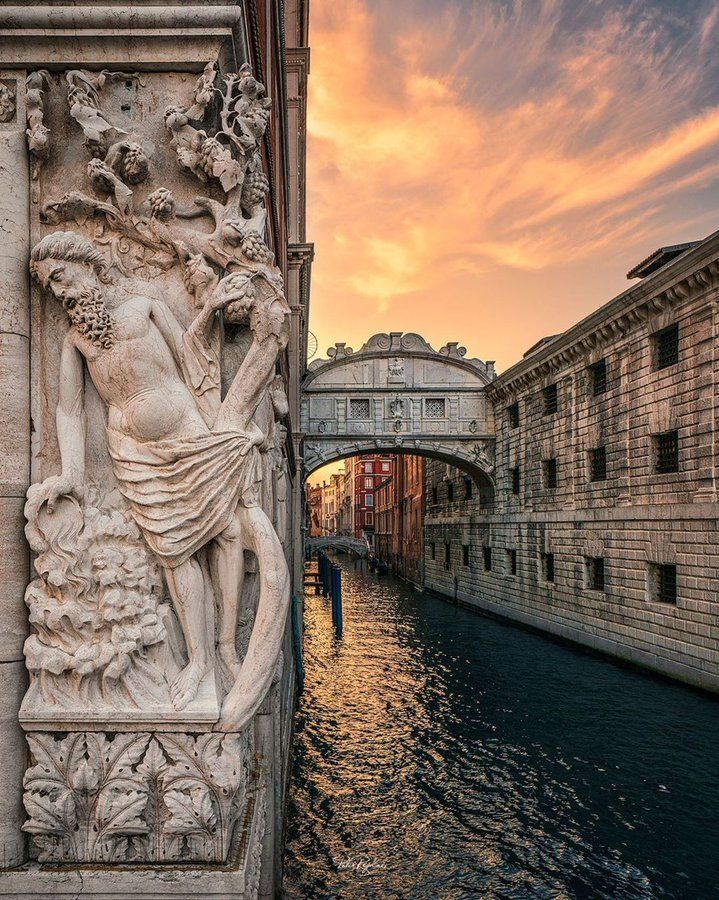
Looking onto the Bridge of Sighs, in Venice
People fled to the island of Torcello, the first on the lagoon, which was already a thriving hub with 20,000 inhabitants.
Only later during the 9th century, did Torcello's influence start to fade. Great numbers moved to Rialto and more space was required for the growing city.
So people started to expand towards the sea...
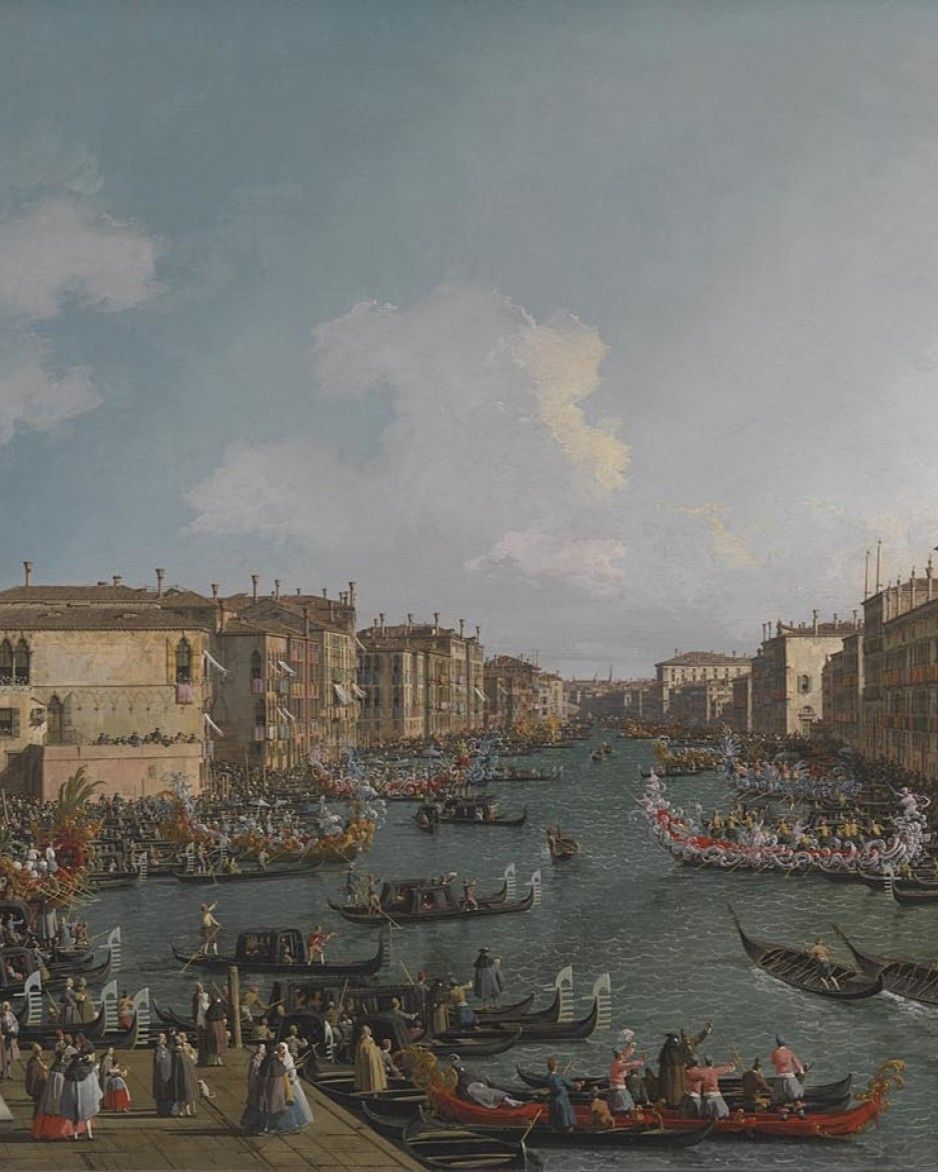
A Regatta on the Grand Canal by Canaletto (1740)
The Venetians drove over 10,000,000 wooden piles (some up to 25 meters) deep into the the layer of clay beneath the lagoon. More specifically, they used alder, oak, pine, elm and larch because these were all hardwoods and resistant to water. All of this was sourced from the forests of Slovenia, Croatia and Montenegro and later from northern Italy. But how did it reach Venice?
First, the logs were bound together into rafts (zattere). Then, they were placed into the Adige, the Brenta and the Piave rivers, which would carry them downstream.
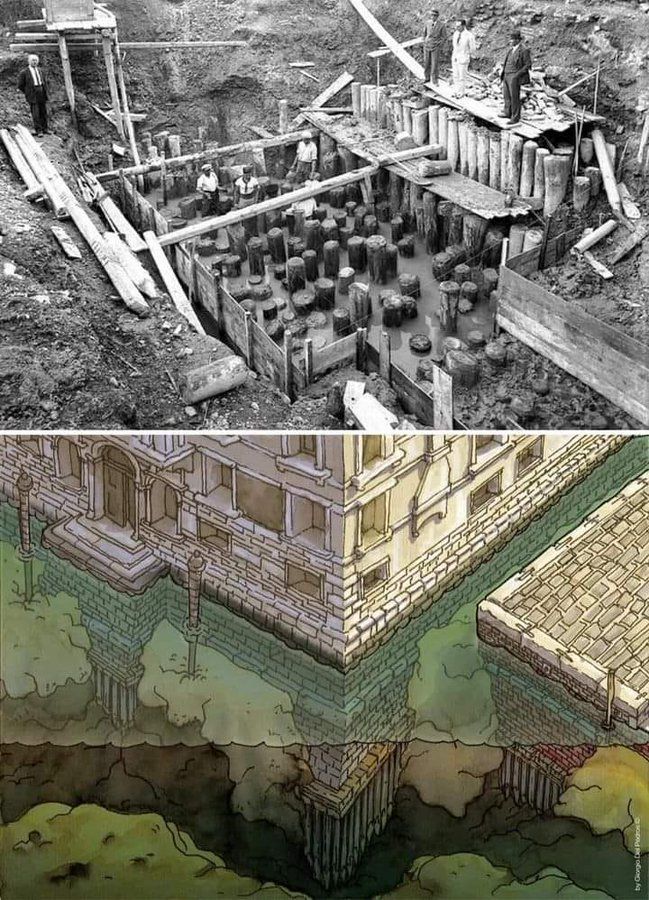
The gaps were filled with mud and silt. On this foundation, they laid wooden platforms and finally, stone buildings.
I hope that you are enjoying reading today’s edition so far!
A humble reminder that you can support the newsletter and get access to exclusive content before it’s released anywhere else…
So how does all this wood not rot?
You see because the logs were surrounded by mud, this meant the logs were deprived of oxygen so decay couldn't take place. Instead, they were petrified, through mineralization. Without knowing it, the Venetians turned their foundation into a material as strong as stone.
1604 years later, almost all of central Venice is supported by the very same tree trunks.
The iconic St. Mark’s Basilica and Campanile rest on 100,000 wooden piles alone.
It’s also one of the greatest wonders of Byzantine architecture, built in 1063. It houses relics of St. Mark, stolen from Alexandria in 828 and the famous 4 horses from Constantinople's Hippodrome.
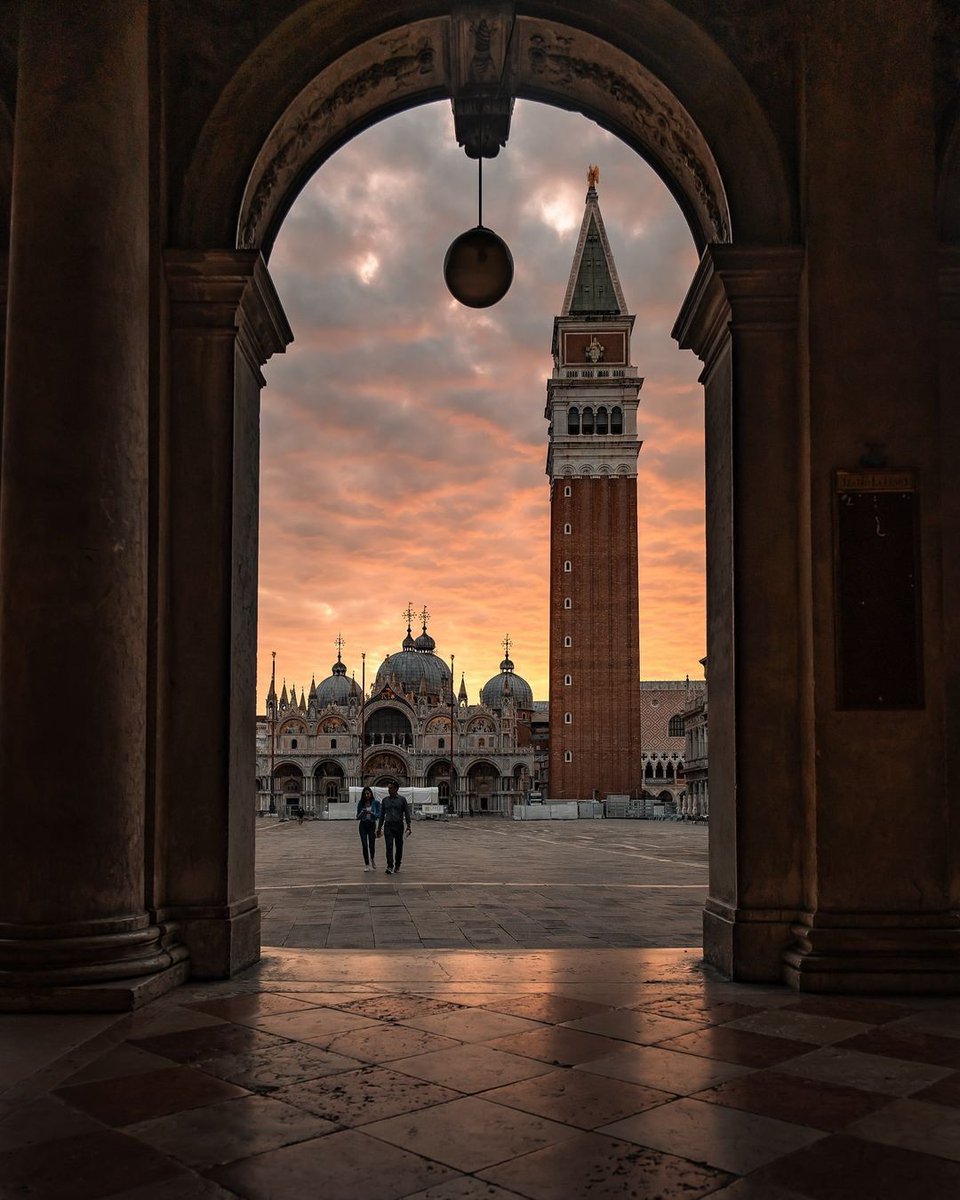
Photo by donamtykl_
And there’s the Basilica Santa Maria della Salute, which required a staggering one million tree trunks. And not to mention, the oldest bridge in Venice — Rialto Bridge.
When it was built in 1591, the challenge was immense. The bridge had to span the Grand Canal and support not just the foot traffic of the whole city but also the bustling markets around it.
Today beneath it, lie approximately 12,000 wooden piles, each about 3.5 meters long, driven into the earth to support its weight. Many believed the single-span stone arch design was weak and that the bridge would collapse but here today, it still stands (and it’s still the most iconic bridge in all of Venice).

The Rialto Bridge as seen connects the neighborhoods of San Marco and San Polo,
Something else worthy of mentioning is how successful the design of the city really is. During the Middle Ages, the Venetians took full advantage of the city's isolation. The “floating” city proved easy to defend, meaning that the city focused more on conducting local and long-distance trade instead.
The canal system allowed Venice to thrive and by the 14th century, Venice became the most prosperous city in all of Europe.
At its height, it had 3,300 ships operated by 36,000 sailors, dominating the Mediterranean trade market — Venice was especially well known as it traded salt.
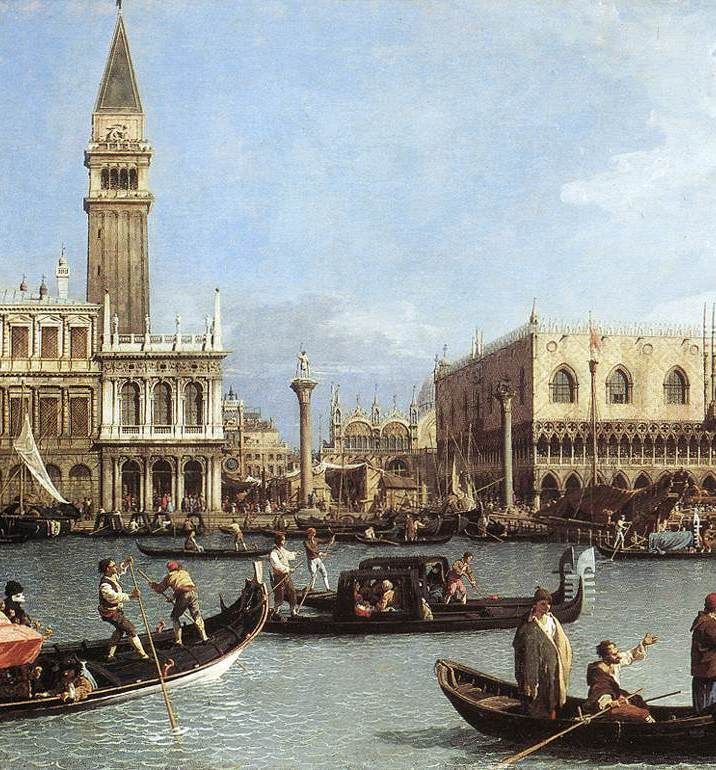
Venice: The Basin of San Marco on Ascension Day by Canaletto (1740)
However, since the city's inception, its sheer weight has caused it to sink about 72 inches (183 cm). And every year it continues to sink at a rate of 1-2 millimeters...with some estimates saying that the city might be totally under water by 2150.
But all hope is not lost.
Mobile barriers and the Moses system have been installed to stop flooding and prevent water coming in during high tide.
Hopefully, this means that some of the greatest architectural gems of the city will remain protected.
You’ve already heard about St. Mark’s Basilica and Campanile so here’s 3 more:
The Doge’s Palace.
Once the seat of Venetian power, the Doge, the lifetime ruler of Venice. If you’ve not guessed already, it’s a masterpiece of Gothic architecture.
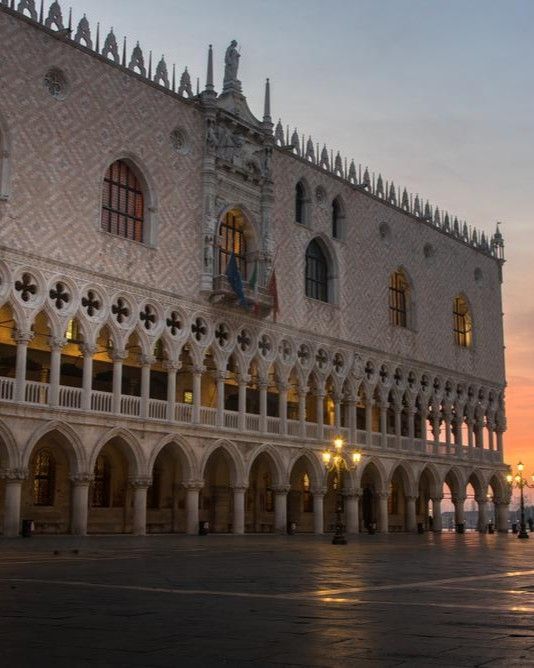
There’s also the Ca' d'Oro, one of the best examples of what you might find in Venice, when travelling along its plethora of canals.
Its name literally means "House of Gold," because sections of its façade were originally covered in gold.
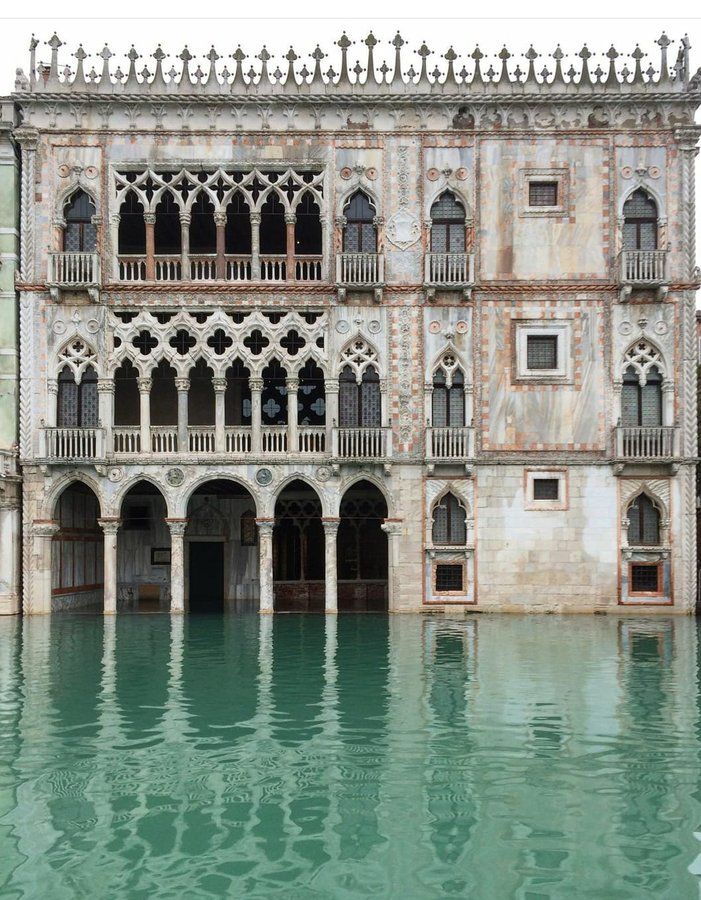
And the Bridge of Sighs.
Maybe not as famous as the bridge of Rialto, but its name comes from prisoners as they saw their last glimpse of Venice through its window.
It connects New Prison to the interrogation rooms of Doge’s Palace.

And that's it for Venice. The city that appears to float an defy all logic but it’s probably more accurate to say that it’s a city on stilts.
Not to mention a masterpiece of design that has foundations to last an eternity (hopefully).
Until Next Time,
World Scholar

P.S. Thank You for getting this far! What topic should we dive into next? Let me know by replying to this email!
Reply